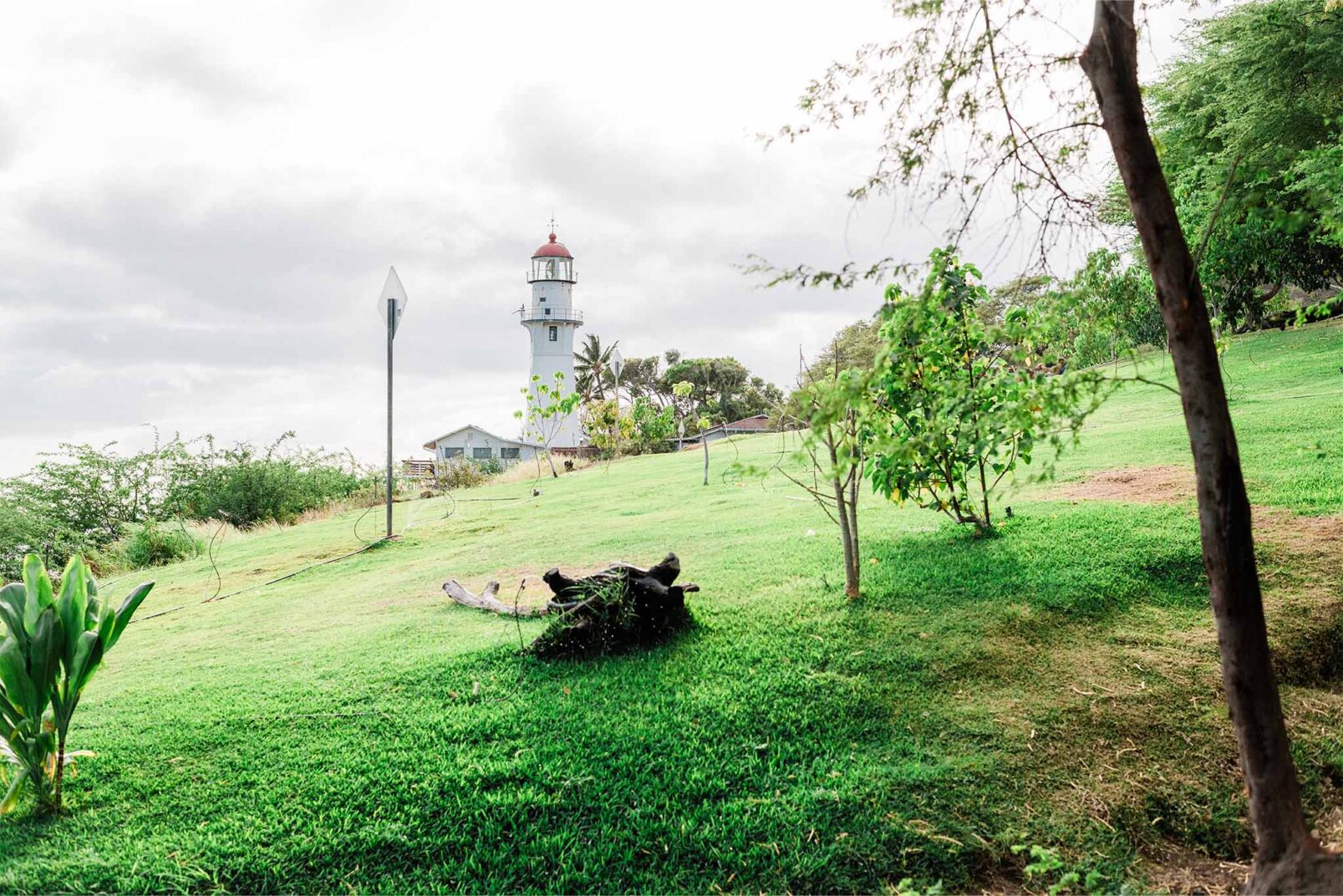The Diamond Head Lighthouse is perched just above sea level at the foot of Lē‘ahi (Diamond Head), its crimson dome appearing like a cardinal’s zucchetto at the base of the mountain’s craggy slopes. For decades, the sun-bleached tower has greeted mariners and curious hikers alike along this stretch of O‘ahu’s southeastern coast. At night, the beacon’s LED bulb—as bright as 100,000 candles—pulses red and white beams visible from 14 nautical miles away, a steadfast messenger to all.
A familiar landmark for generations of locals, the current iteration of the lighthouse was completed in the early 20th century. Prior, a 40-foot iron structure stood sentinel at the site, alerting approaching ships to the shallow reef breaks in the warm waters offshore. Two major ship groundings, one in 1893 and another in 1897, prompted the construction of this traditional beacon in 1899.
The resulting lighthouse was successful in guiding incoming ships, but high winds and the original tower’s rigid iron framework caused concerns over the structure’s long-term integrity, leading to an extensive renovation in 1917. The lighthouse as we know it today was finished in 1918. For more than a century since, the 57-foot tower of whitewashed concrete, stucco, and steel has kept vigil over the churning waters below.
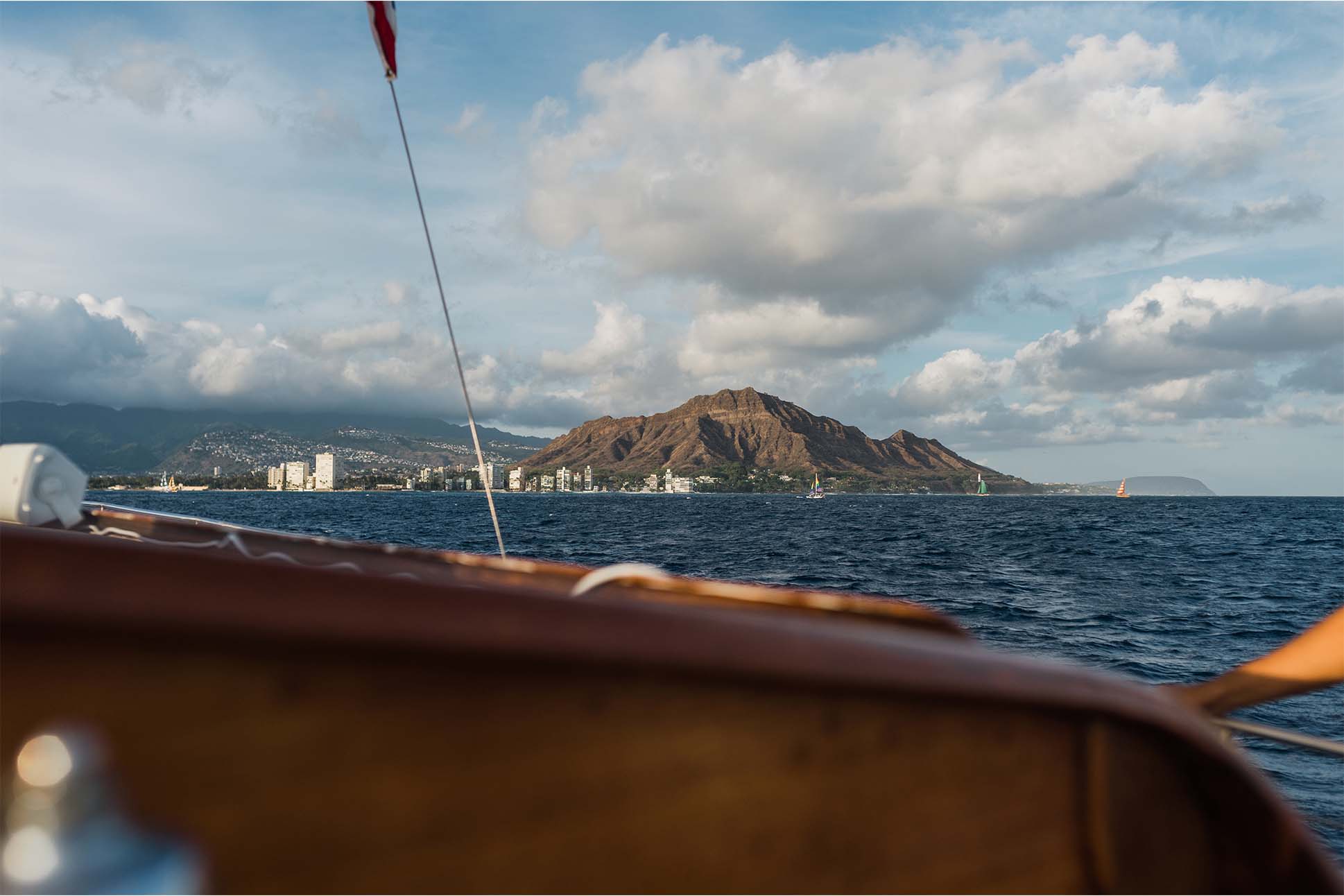

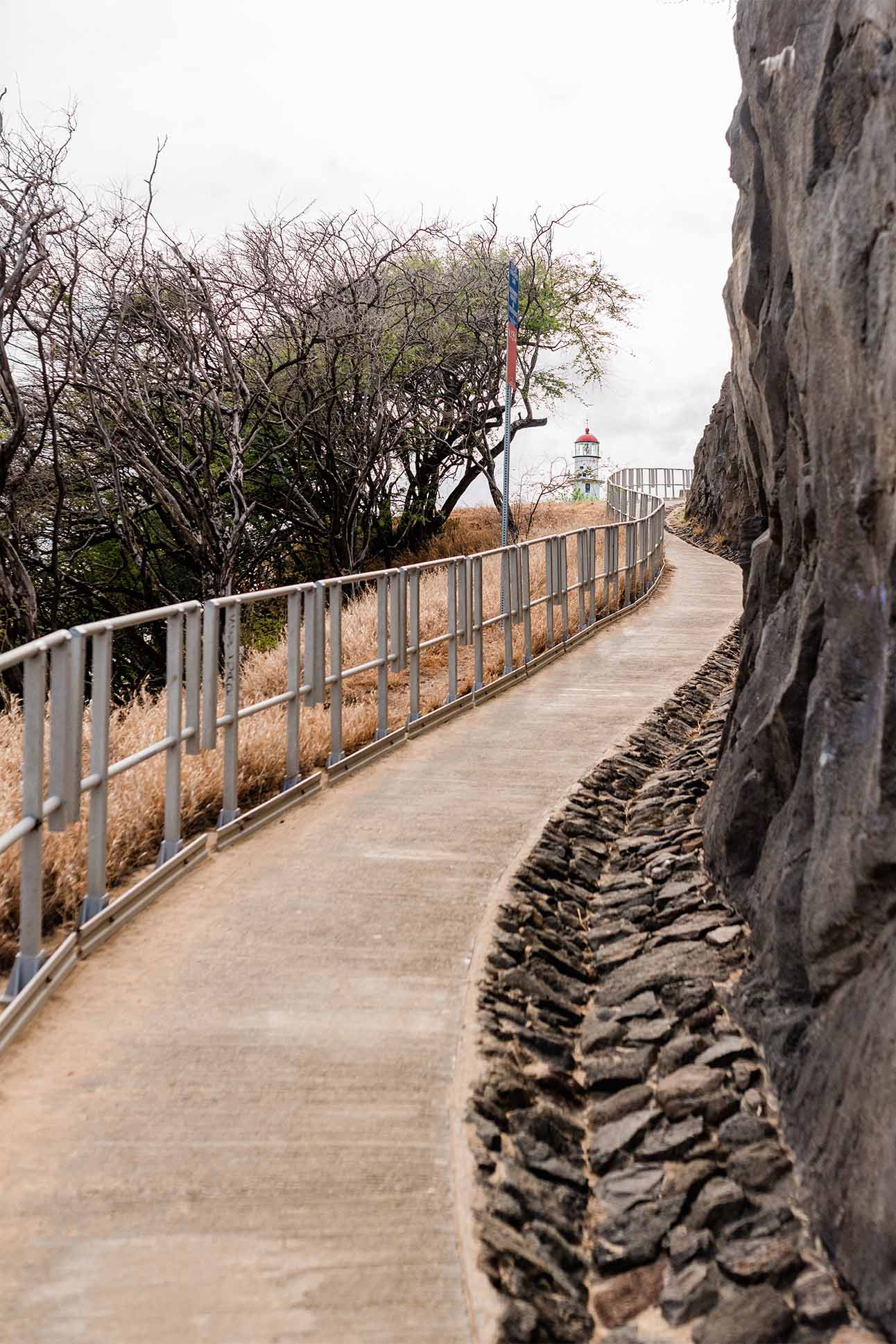
Is an old-school lighthouse still relevant in today’s age of drones, GPS, and artificial intelligence? “Absolutely,” says Michael Campise, a Boatswain’s Mate First Class in the U.S. Coast Guard’s Aids to Navigation team. “Mariners are 100 percent still using the lighthouse to navigate.” While the vast majority of mariners employ some kind of electronic navigation system, they use the lighthouse as a physical guidepost when rounding the shoal waters off Lē‘ahi. Whenever the light goes out—an infrequent but occasional occurrence—Campise’s team receives calls almost immediately from concerned boaters. “They’re pretty adamant that we get out there and get the light back on,” he says.
Since World War II, the Diamond Head Lighthouse has been the permanent home of the Coast Guard in Hawai‘i. Rear Admiral Sean Regan, commander of the Coast Guard’s District 14, lives in the adjoining residence, built in 1921 to house the original lighthouse keeper. Along with serving as the home of the Coast Guard’s district commander, the single-story house, with its resplendent green lawn and stunning ocean views, plays a dignified host for Coast Guard ceremonies, such as retirements and commemorations, dinners for visiting foreign dignitaries, and the occasional party for the staff who maintain it.

Some other surf spots don’t have anything. We have this iconic landmark.
Race Skelton, surfer

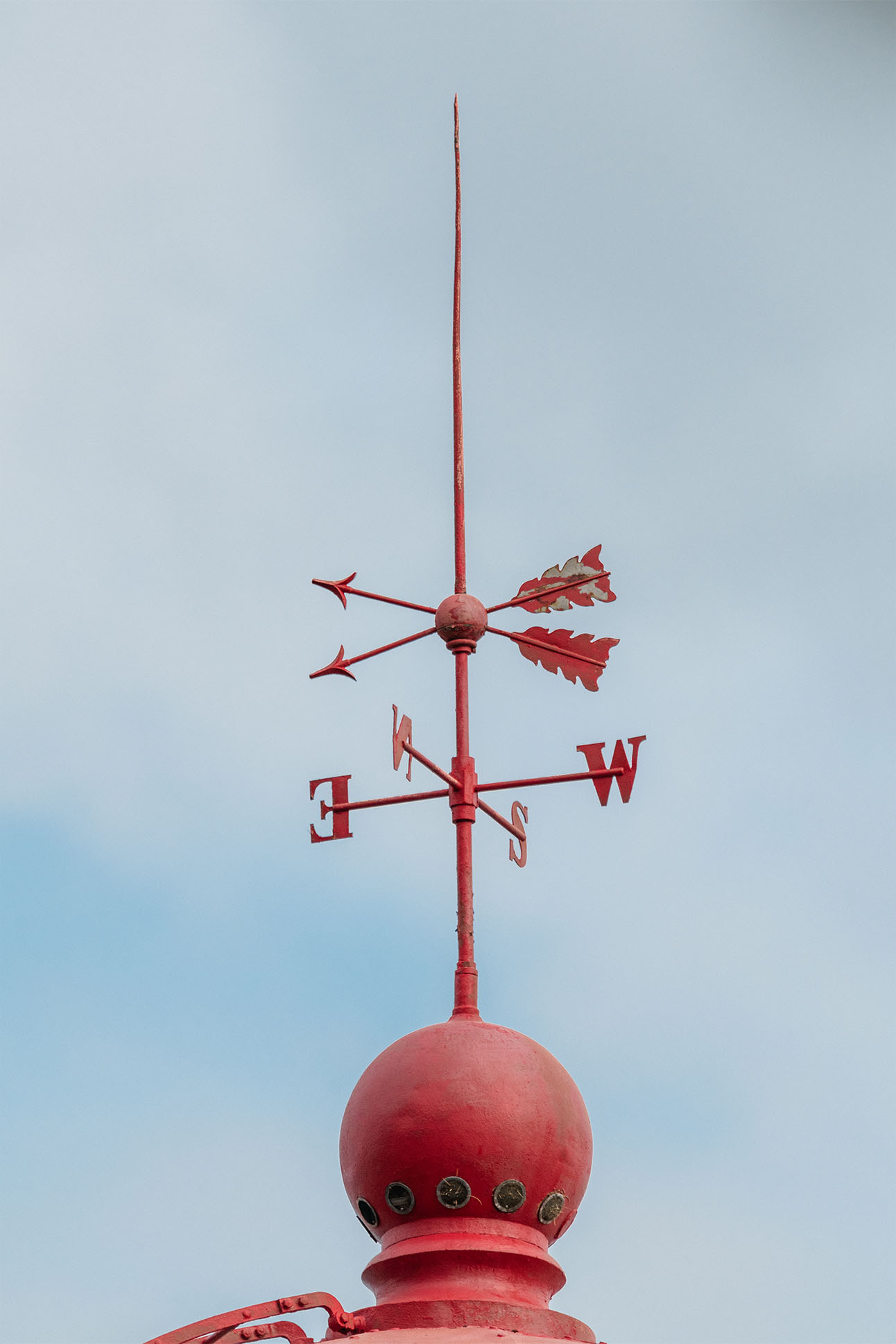

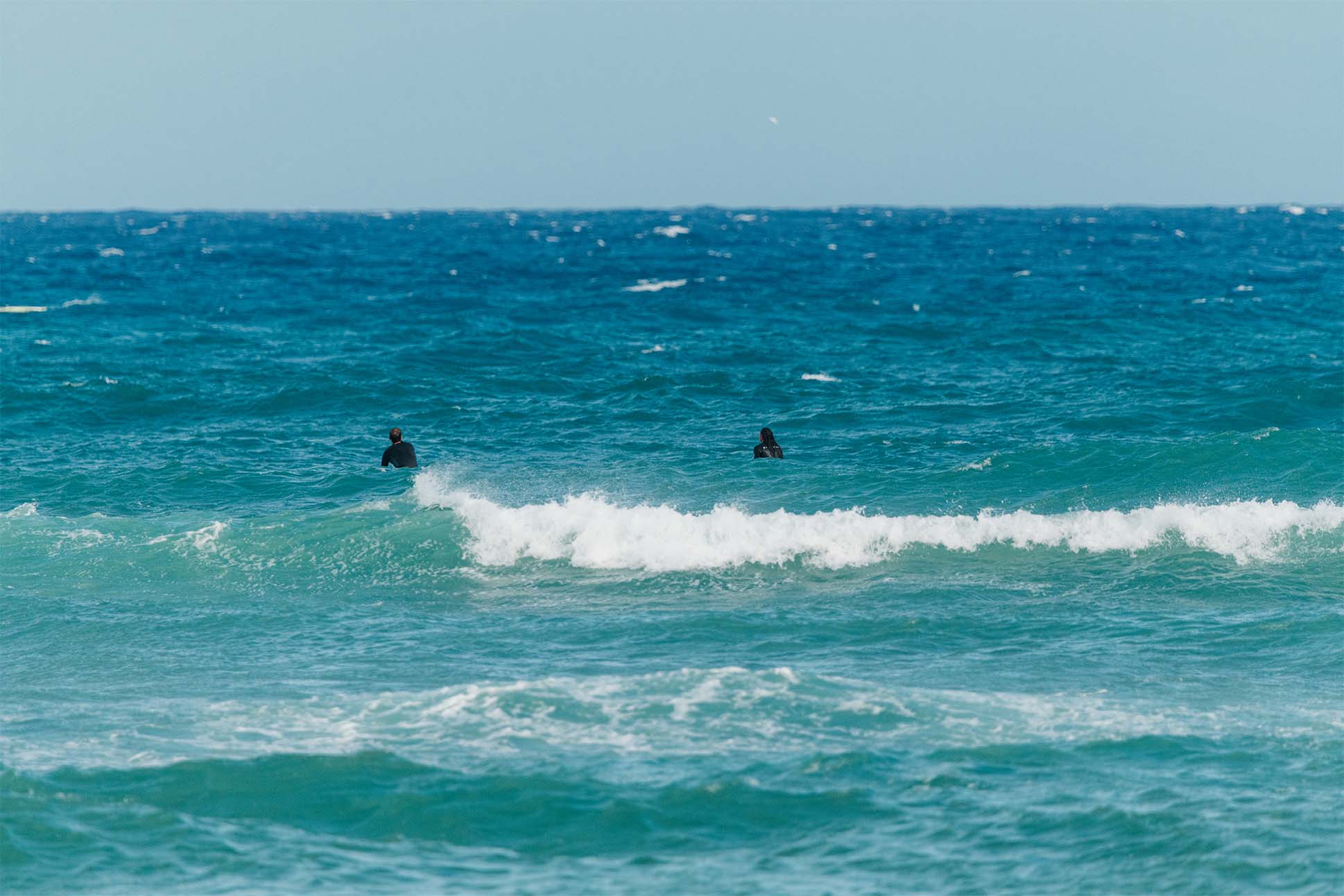
Although Diamond Head Road comes within several yards of the lighthouse property, visitors to the lighthouse must be specifically invited by the Coast Guard to enter the premises. Campise is part of the team that helps with the lighthouse’s upkeep: lens cleaning, painting, vegetation removal, and the occasional vandalism cleanup. In some ways, Campise jokes, the lighthouse is “like a really expensive lawn gnome.”
Amid Honolulu’s ever-changing landscape, wherein rapid development often leads to the demolishing of beloved landmarks, the lighthouse has remained steadfast. As such, the beacon has become a fixture of local life in surprising ways.
In early mornings and dusky evenings, boaters aren’t the only ones with their eyes on the tower. Surfers who frequent the windy reef below call the break Lighthouse, or simply “LH,” in their group chats. As Kaimukī local Race Skelton explains, the lighthouse is a crucial landmark for all serious surfers who call LH their home break. By marking the beacon and looking east to Black Point, Skelton can triangulate the best position to catch waves. The spot is “known to be windy and shifty, so having a lineup marker is helpful,” Skelton says, adding that understanding how to use the lighthouse to position yourself “gives us an advantage over people who don’t regularly surf there.”
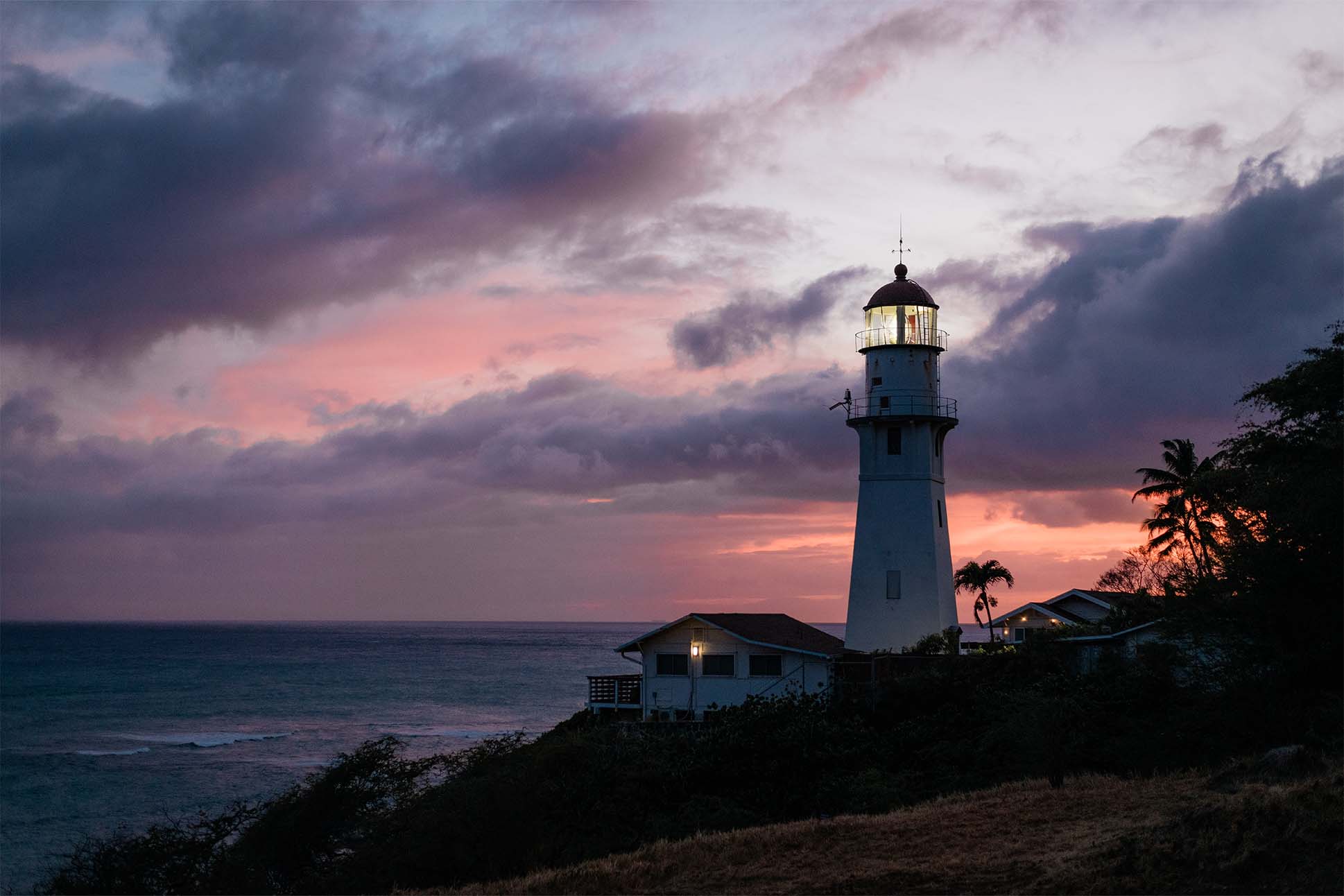
Skelton describes the break as a medium-difficulty spot, but one that attracts a specific kind of crowd. “It’s pretty low-key,” he says, explaining that the heavy winds and unpredictable waves cause some surfers to forgo the break. “It attracts a certain type of surfer who doesn’t like crowds,” he says. “You want to go there for solitude.”
“It’s kind of trippy,” Skelton says about the moment the light turns on at dusk, illuminating the path as surfers hike up the hill back to their cars. His favorite times, though, are during a Kona low—a persistent low-pressure system that brings rain from the south. As the rain builds, thin rivulets stream like tears down the slope of Lē‘ahi and past the tower. In a way, surfer and tower mirror each other, lonesome warriors refusing to yield in any weather. “Some other surf spots don’t have anything,” Skelton says. “We have this iconic landmark.”

